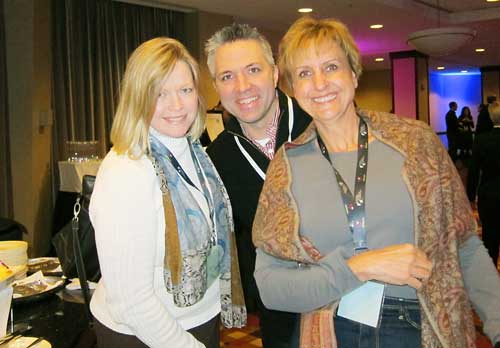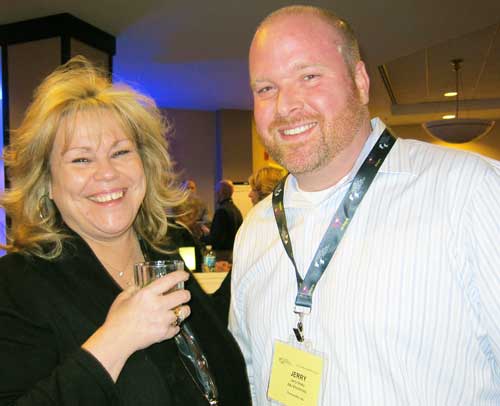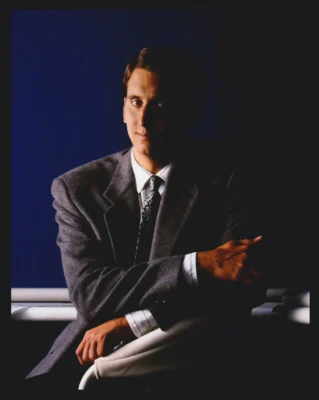If any industry is challenged to manage change, it is healthcare and, by extension, healthcare exhibiting. And that was the theme for the Healthcare Convention and Exhibitors Association’s (HCEA) 2013 Healthcare Convention Marketing Summit.

Approximately 180 attendees started out the summit with a welcome reception. But even while feasting on crab cakes, oysters and pasta, they were asked to visit several comment boards set up strategically around the room at Baltimore’s Sheraton Inner Harbor Hotel to help frame the issues that are utmost in their minds.
The general session the next morning was appropriately titled, “We’re All Facing It: Managing Change in the Healthcare Marketing Sector.” The speaker, Doug Amann, vice president of customer engagement, Pfizer Global Commercial Operations, talked about the mindset necessary to weather changes not only in the industry, but in each company in the room, no matter whether that company was a healthcare exhibitor, a healthcare association or a supplier to the industry.
After setting the stage, Amann presented a case study to the group about Pfizer’s globalization initiative and encouraged audience participation by asking for suggestions from the group. This high degree of interactivity throughout the entire summit was a good indicator of both the relevance of the theme and the general level of engagement.
After the general session, attendees could choose a discussion group. The choices included regulatory and compliance, chaired by Diane Benson, GE Healthcare, and Kathy Clarke, SageRock Advisors, where topics were the Sunshine Act, corporate integrity agreements and transparency initiatives.
In another room, Christine Farmer, sanofi, and Sean Feehan, GWF Associates, took on organizational changes, encompassing mergers and acquisitions, budgets and the participation of agencies.
A third discussion group focused on environmental challenges. Led by Laine Mann, Pfizer, and Mike Ryan, ARVO, participants talked about the effect of the patent cliff (major prescription drugs going off patent and becoming generic), the influx of technology and the increasing mandate to produce a global perspective on meetings.

The second general session, which was held after a networking lunch, was an expert panel discussion titled “Exploring Dynamics between Healthcare Brand Management, Sales and Conventions.” Participants Roger May, Siemens; Susan Steele, Microsoft; and Christine DiDomenico, Purdue Pharma; fielded questions that had been sent in prior to the Summit as well as those that appeared on the boards at the welcome reception. The audience was also encouraged to ask questions, which continued the interactive component of the summit. The concerns were widespread and included everything from budgets to communication to metrics. The panelists used examples from their own work lives to shed some light on the issues faced by most of the audience.
Following this session, attendees had the choice of two breakouts, “The Art of Benchmarking and the Science of Measuring Value” and “Sunshine Rules.” The first featured a panel comprised of Ann Marie Bermudez, Daiichi Sankyo; Don Schmid, Hospira; Marc Goldberg, founder marketech360; and Ian Sequeira, executive vice president, Exhibit Surveys; with Frank Skinner, executive director, HCEA, acting as moderator. This session reported the progress of HCEA’s mission to identify the common ground on which all major healthcare exhibitors benchmark their success and how they use this information for strategic planning and program improvement.
As healthcare exhibitors wait for guidance on the implementation of the Sunshine Rules, frustration continues to grow since the date set for this guidance was more than 18 months ago and still there is nothing from government agencies. Thomas Sullivan, president and founder of Rockpointe Corporation, shared his insights in the second breakout session on the process for finalizing the rule and what to expect from the Centers for Medicare and Medicaid Services.
When asked what the best part of the Summit was, most attendees responded with the interaction between themselves and the presenters. There were no passives spectators, and attendees could take the energy of the summit back to their respective companies as they face industry change together.































